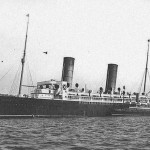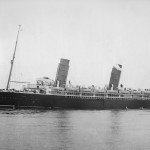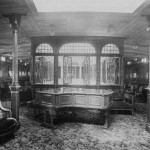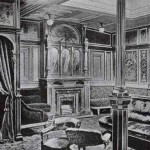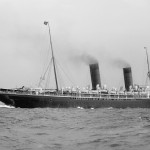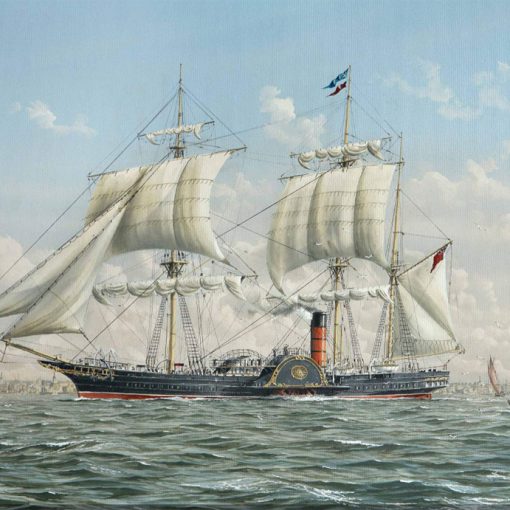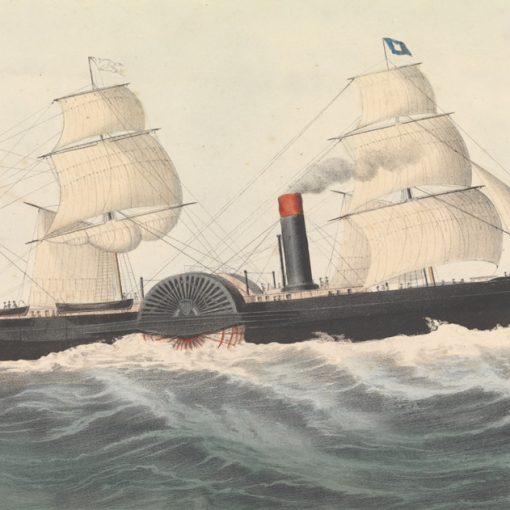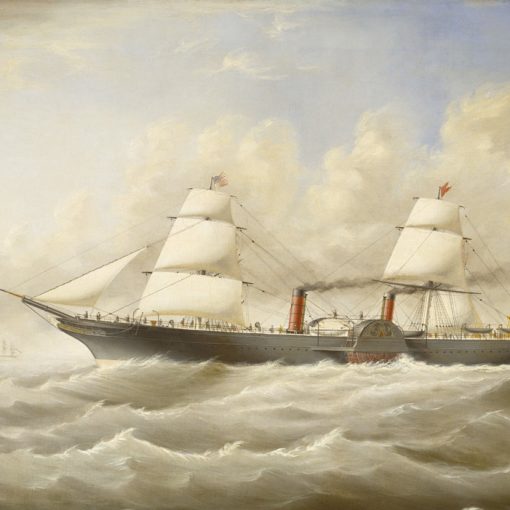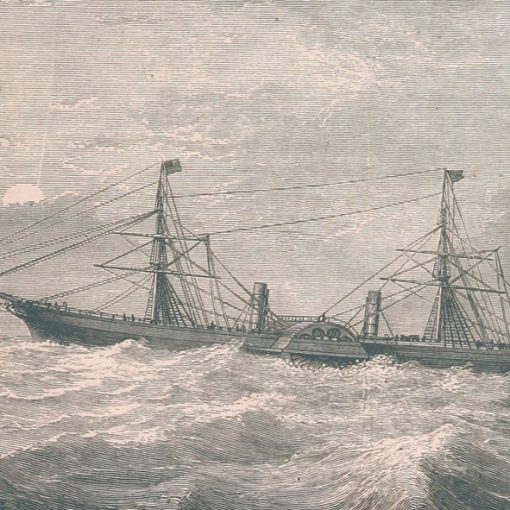1893 – 1909
The two new Cunarders launched in 1892 and 1893, Campania and Lucania, brought the evolution of steamships another bit further. The Blue Riband-holders at the time, Inman & International Line’s City of New York and City of Paris, had clipper-like bows and sailing masts ready should they ever be needed. Although those two ships were just five years of age when the Campania arrived, her innovative design must have made them seem somewhat old-fashioned.
The Campania and Lucania were built by the Glasgow firm of Fairfield Co. Ltd. The Campania was launched on September 8th 1892, by Lady Burns, wife of the Cunard chairman. Five months later, on February 2nd 1893, Sir William Pearce MP, the chairman of the shipyard, launched the second of the class – Lucania. The Campania made her maiden voyage on April 22nd, 1893, some two months after the launch of her sister, Lucania. She had soon taken back the glory stolen by Inman & International Line’s ships by setting new transatlantic speed records.
On September 2nd 1893, the Lucania was ready to enter service on the Liverpool-New York run. Proving to be slightly faster than her older sister, she set a new westbound record on her first trip. Soon, she would also possess the eastbound record. But aside from being somewhat swifter than her sister, the Lucania was very much alike the Campania. Both ships had a very modern appearance, with a knife-like bow and two giant funnels, naturally painted in Cunard’s red and black livery. The two ships also had the feature that would characterise the Mauretania 14 years later, namely the forest of cowl ventilators on the upper decks. These were necessary to provide the lower compartments of the ship with fresh air, something the stokers needed quite a ration of.
The Lucania kept the Blue Riband for four years, but during that time Germany was gathering its strength on the high seas. The Kaiser was determined to create merchant and naval fleets equal to those of Great Britain, and he wanted his ships to be the best. In 1897, the Norddeutscher Lloyd introduced their new Kaiser Wilhelm der Grosse. That ship was the largest built so far (not counting the mighty Great Eastern), and it was not long before she wrestled the Blue Riband out of Lucania’s grasp. Having lost the fabled award, the Lucania and her sister Campania remained on their Liverpool to New York route, and managed to retain a reputation of reliability. It would take another 10 years before the Cunard Line was to take the Blue Riband back from their German rivals.
In 1907, Cunard put the new giants Lusitania and Mauretania into service. They soon proved their worth and returned the Blue Riband into British hands again. But with these two new and fast ships, the Campania and Lucania suddenly seemed out-dated and slow. The two former champions remained on the Liverpool-New York run, but began spending more and more time each year laid up, especially the Lucania. In 1909, the Lucania made only one round trip to New York, and was then laid up in the Huskisson Dock in Liverpool. It was here that she would meet her end.
In the early hours of August 14th 1909, a fire was discovered on board the laid up Lucania. The fire spread rapidly and by the time firefighters arrived, the flames were out of control. The water pumped on to the liner made her take on a considerable list. But unlike the cases of the Normandie and the Queen Elizabeth, tugs were able to pull her upright again. The Lucania was then towed to the middle of the harbour where she was set down in the mud. By noon the same day, the fire was at last extinguished.
Then the inspectors could come aboard the burnt-out vessel. A thorough investigation was carried out, showing that almost the entire ship had been devastated by the blaze. The engine room bulkhead had withstood the heat though, and the ship’s engines were still operational. But Cunard soon found repairs to be too expensive, and the Lucania was subsequently sold for scrap. She arrived at the shipbreakers of Tomas Ward in Swansea under her own steam. Before 1910 was over, the former Blue Riband-champion Lucania had been completely cut up.
Specifications
- 622 feet (190 m) long
- 65 feet (19.9 m) wide
- 12,950 gross tons
- Ten-cylinder triple-expansion reciprocating engines turning two propellers
- 22 knot service speed
- Passenger capacity of 2,000 people

